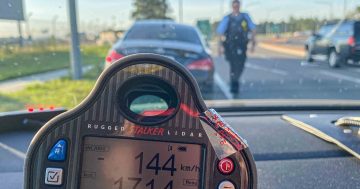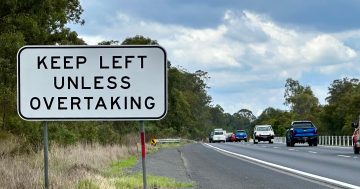On the AFP website http://police.act.gov.au/roads-and-traffic/rules-and-regulations.aspx
we have two links
http://www.tams.act.gov.au/move/driver_licence/Road_Rules_Handbook
and the National Road Rules http://www.ntc.gov.au/ViewPage.aspx?documentid=00794
All well and good you might think but right at the top of the National Road Rules page:
Please note that the Australian Road Rules are model Rules only and have no legal effect. They form the basis of Road Rules of each Australian state and territory.
And on the first page of the Drivers Handbook (part A):
While this handbook is predominantly a training tool for learner drivers, it is also intended to assist ACT or visiting drivers, however it is intended as a guideline only.
Legislative provisions are contained in the Australian Road Rules 2003 and related Acts and Regulations. For further information please see page 13 of this handbook.
None of the links on page 13 lead to the real ACT road rules, just back to these two documents.





















